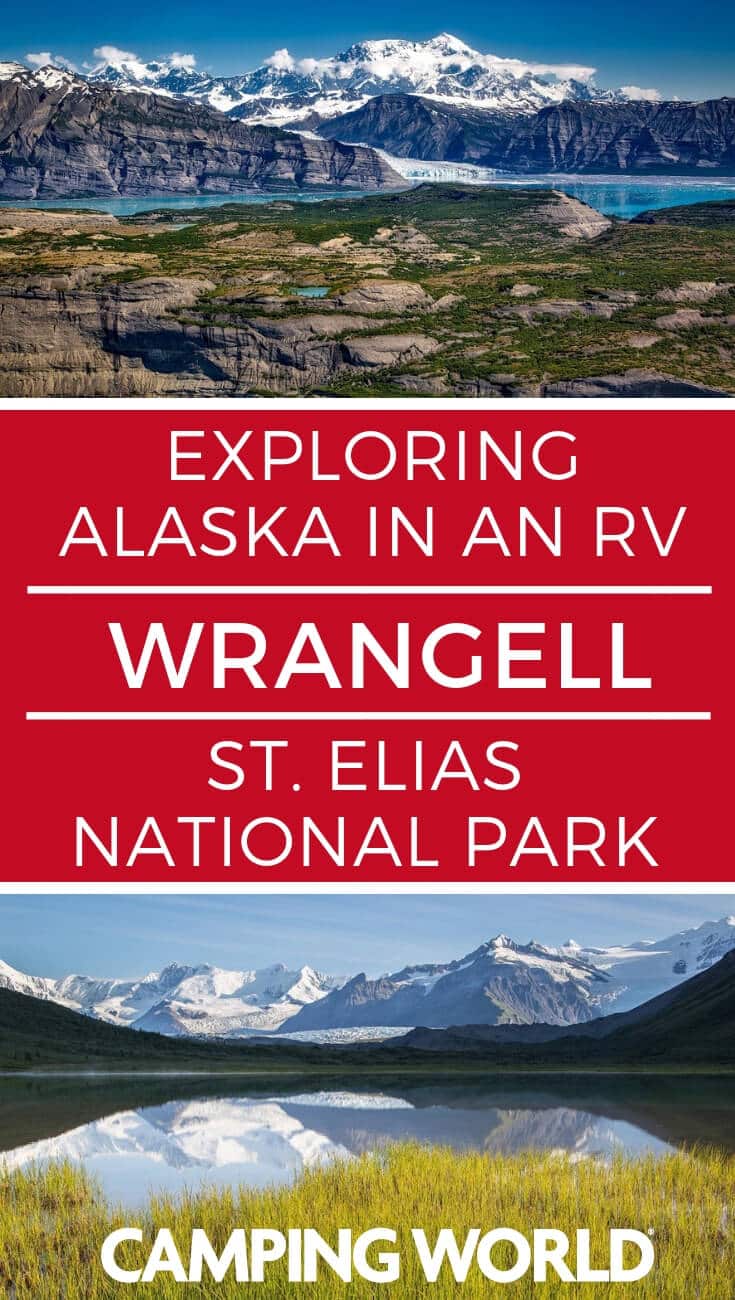Many RVers dream of traveling to Alaska, considering it the ultimate destination on their bucket lists. So we’ve created a series of articles to help you navigate the Last Frontier in a motorhome or travel trailer, in hopes that you can enjoy exploring the 49th state, as well!

Today we’re going to explore:
Wrangell–St. Elias National Park and Preserve
If you are looking for the true Alaskan wilderness, awe-inspiring scenery, and challenging outdoor adventure, you’ll find it in spades at the nation’s largest national park: Wrangell–St. Elias.
Located in the southeast corner of the Frontier State, this preserve is the size of six Yellowstones. At over 13 million acres,
Wrangell–St. Elias encompasses extreme variations in topography. Four major mountain ranges meet here, and the park has landscapes from sea level to over 18,000 feet high. One of those mountains is still an active volcano, with steam venting from its peak year round.
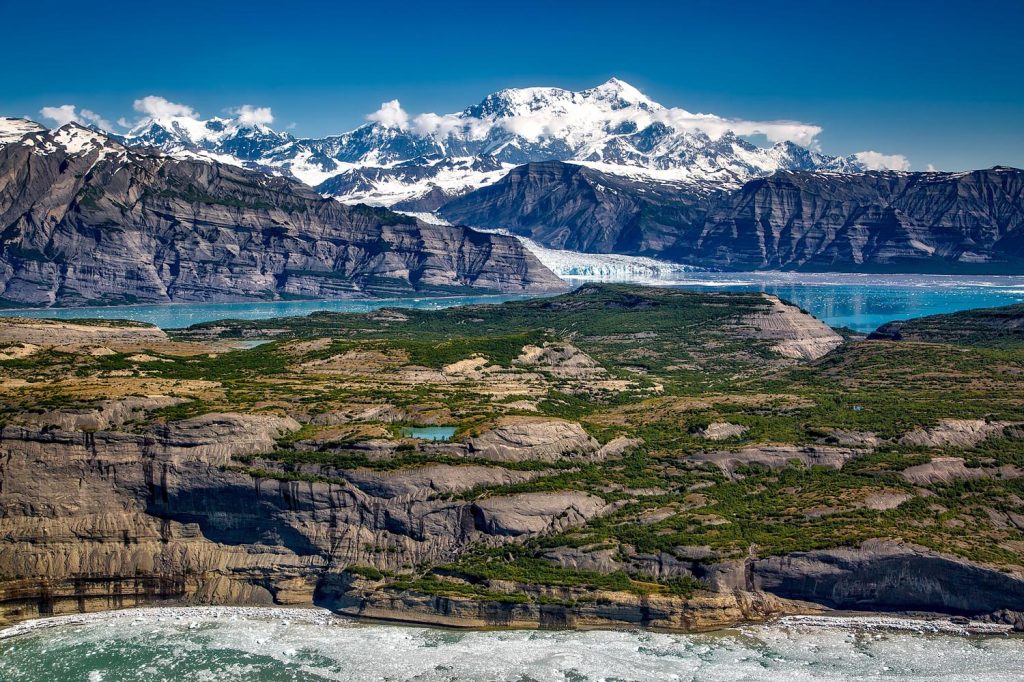
Every river in this vast region is fed by glaciers, some of them larger than states in the Lower 48. Tidewater glaciers calving into Yakutat Bay and the Gulf of Alaska showcase erosion at its apex, and inland ice fields cover thousands of miles—a perfect opportunity for backcountry skiing and ice climbing!
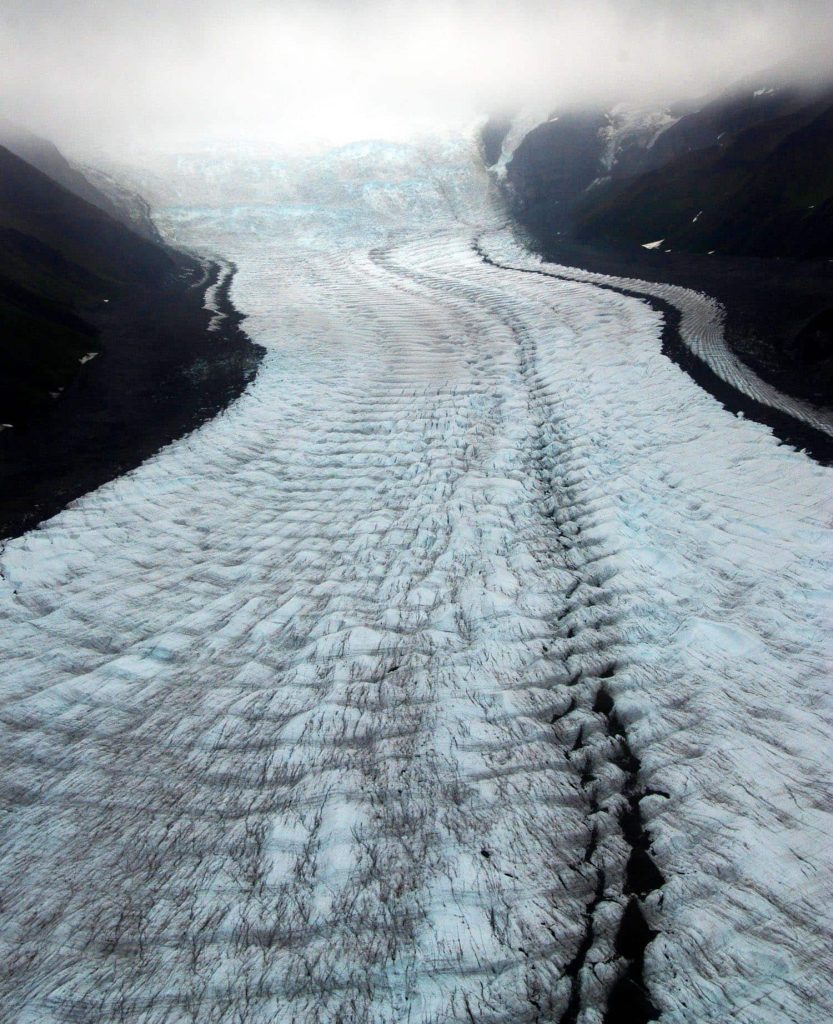
History
Wrangell–St. Elias National Park and Preserve took its time climbing to national park status. Way back in 1940, the area was recommended as a national monument, but because of World War II, President Roosevelt put the designation on the back burner. It wasn’t until 40 years later that President Carter made it official, and the region gained the protection it needed as a national park.
Long before the government even considered park status, Wrangell–St. Elias was sporadically inhabited by Athabascan and Tlingit native peoples who discovered copper near present day McCarthy. This metal was used in their tools and for trade with other natives, but because the region didn’t offer plentiful game, the populations never grew much.
However, with the discovery of copper, miners weren’t too far behind. Some gold was discovered in the northern Wrangell Mountains, and the US Geological Survey came to the area to create more accurate maps. This led to mineral exploration, and eventually a huge deposit of chalcocite, which had a very high concentration of copper, was uncovered. Five mines grew outside of McCarthy, and with them a mill complex was born. The Kennecott Mill processed the chalcocite and some silver. But this entire production was dependent upon train service to the region from Cordova, Alaska.

Only operating from 1911 to 1938, Kennecott is estimated to have produced between 100 million to 300 million dollars in ore. When the mines played out, the railroad abandoned their line. Today that rail line is the foundation for one of the two roads in Wrangell–St. Elias National Park. The other road was created when gold was discovered near Nabesna in the northern section of the park.
Today small communities of native Ahtna are scattered throughout the Copper River Valley, and Tlingit natives live on the coast along the Gulf of Alaska.
Getting There
Mining brought two roads to Wrangell–St. Elias, and you can drive an RV part of the way into the park. However, many tourists choose to fly into and around this scenic wonderland of mountain tops, rushing rivers and glacial ice. Words aren’t big enough to describe the vast landscapes, but seeing them from the sky puts the park into perspective.
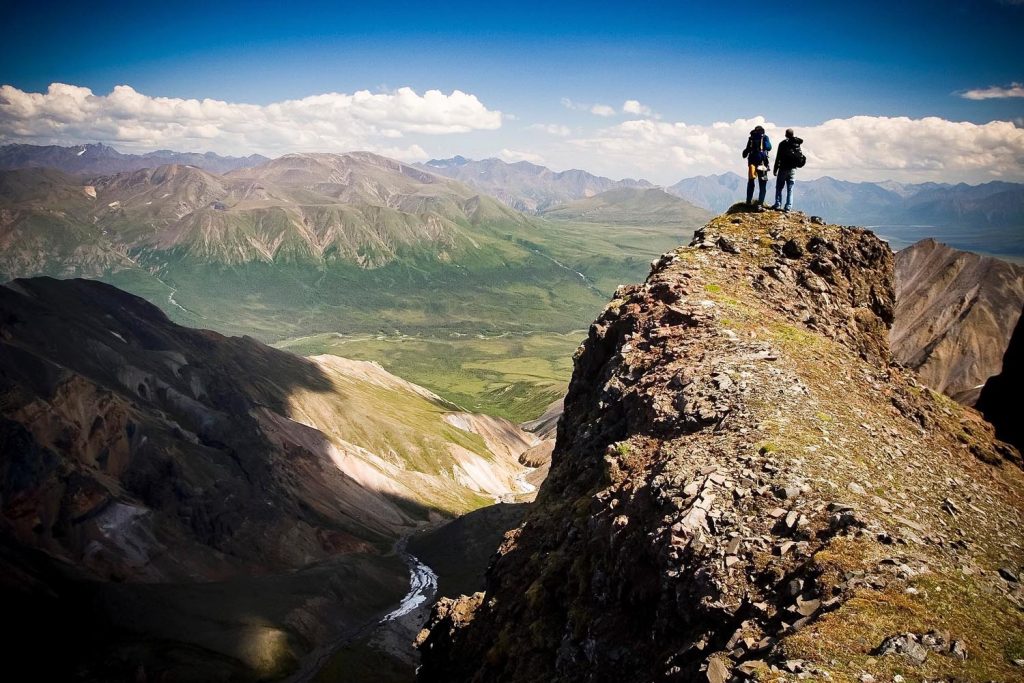
If you drive, the Richardson Highway (Alaska 4) south from Glennallen, it will take you to the park visitors center just north of Copper Center. There you will find a small complex of four buildings and some wonderful hiking trails overlooking the Copper River. Park rangers are well versed in backcountry hiking and camping and have current road conditions for the trip to McCarthy. A separate building houses the movie theater, for a cinematic overview of the region.
An added surprise is a building housing the Ahtna Cultural Center, which is full of history, art, and community practices of the Ahtna people. Outside the front door is a hand-built fish wheel, which is still used today.
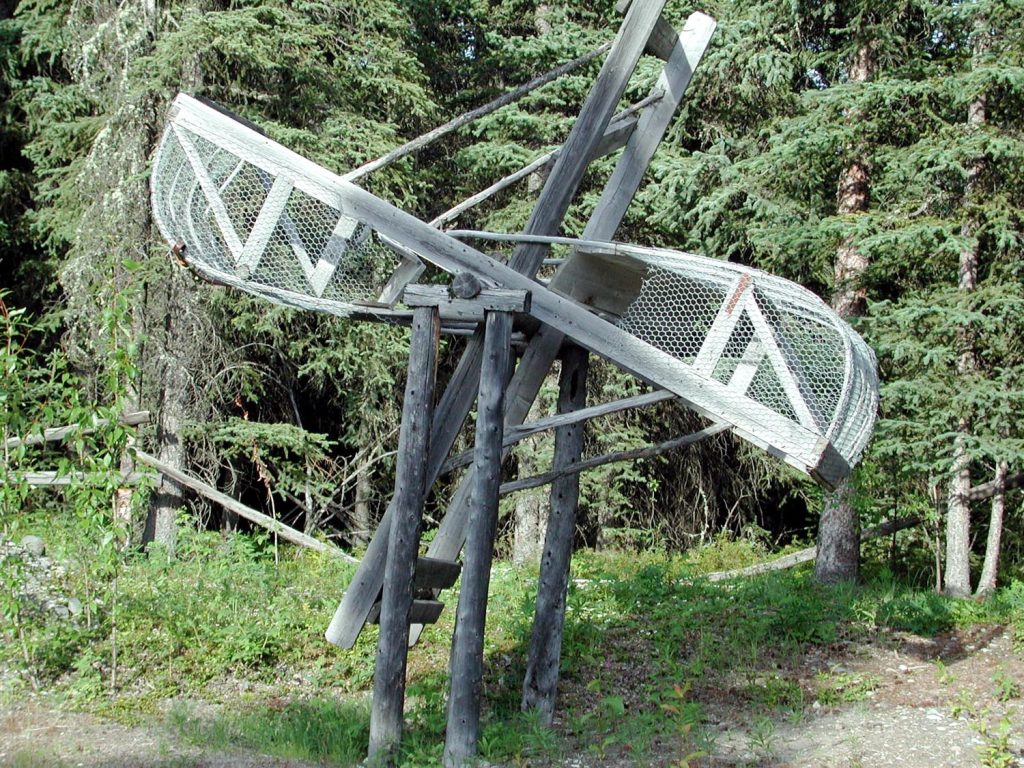
Continue south on the Richardson Highway to Highway 10, turning off to Chitina. From Chitina, the road gets interesting.
Remember that railroad built to take processed ore away from the mines? Well, from Chitina to McCarthy the resulting road built on top of the old rail line is “rugged” at best. Many tourists opt to rent a “gravel ready” vehicle to handle this section. The speed limit is 35 mph. If you follow it, you shouldn’t have any problems, but there is an option to leave flat tires at the end of the road and they will be fixed by the time you return from your mine visit (Magic elves, I guess!).
There is a third option: take a shuttle from either Glennallen or from Chitina. Any way you choose to travel, you should end up at a footbridge crossing the Chitina River. You must park your vehicle at this point and walk across the bridge. If you decide to continue the walk, you can hike the five miles into McCarthy, or take a shuttle from the bridge to the Kennecott Mines and McCarthy. Whatever way you get there, the destination is well worth all of the effort.
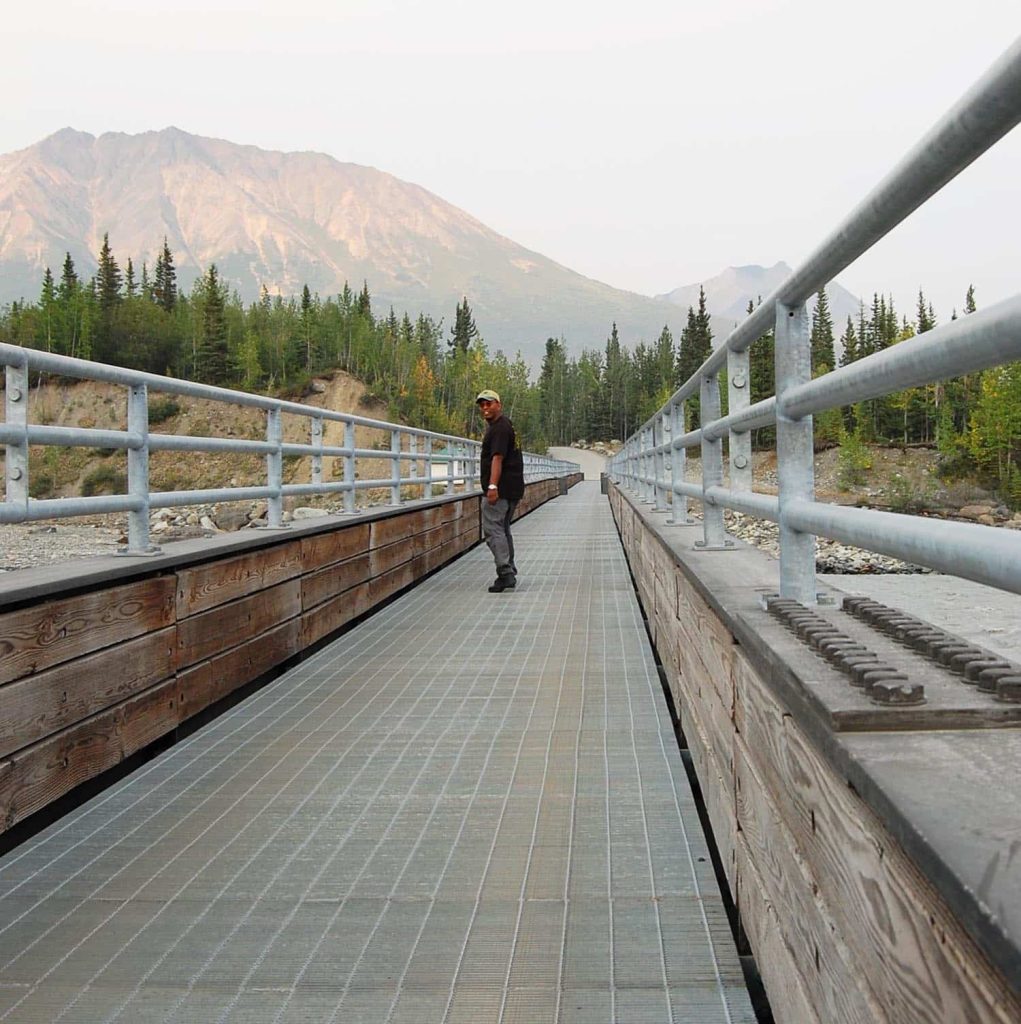
Kennecott
Kennecott Mill is remarkably in tact for its age, especially with the punishment the elements must have doled out to these structures on a regular basis. Fourteen stories still stand on the mountain slope, and it must have been an amazing operation when the ore was actively being mined and processed in the early 1900s. In such a remote area, it would have taken hardened prospectors and mill workers to endure the harsh conditions and lengthy solitude to work here.
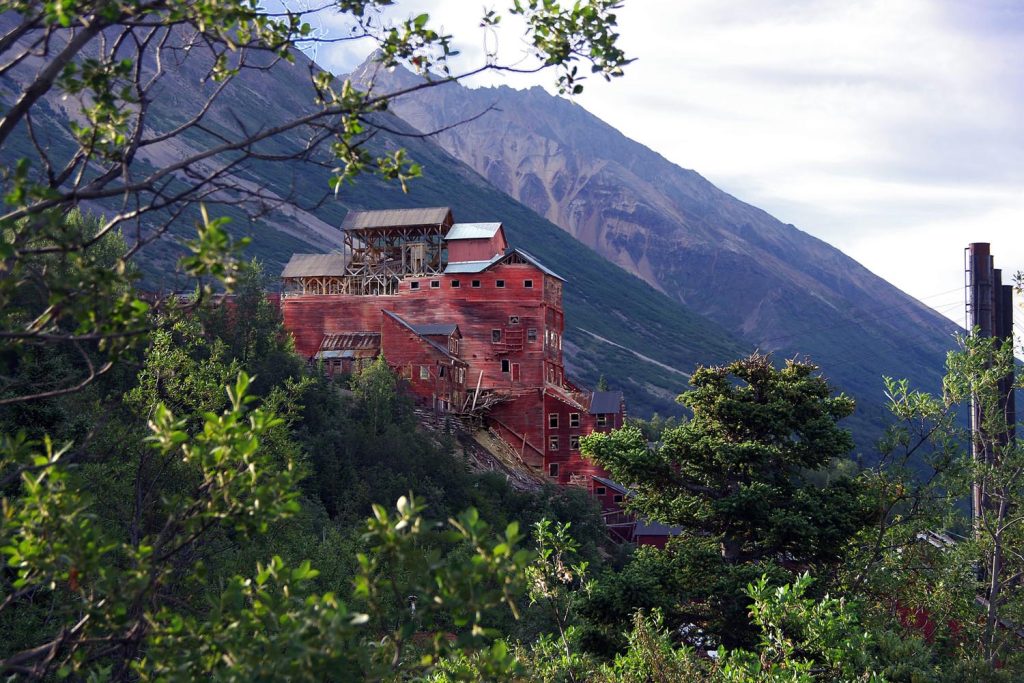
Because the mining corporation abandoned the mill and mines in a hurry, much of the equipment and even personal belongings were left at the site. Today the only way to see the interior of the mill is with a guided tour that lasts 2 hours. Moderate climbing, stairs and uneven floors are involved, so contact the guide service if you have and questions.
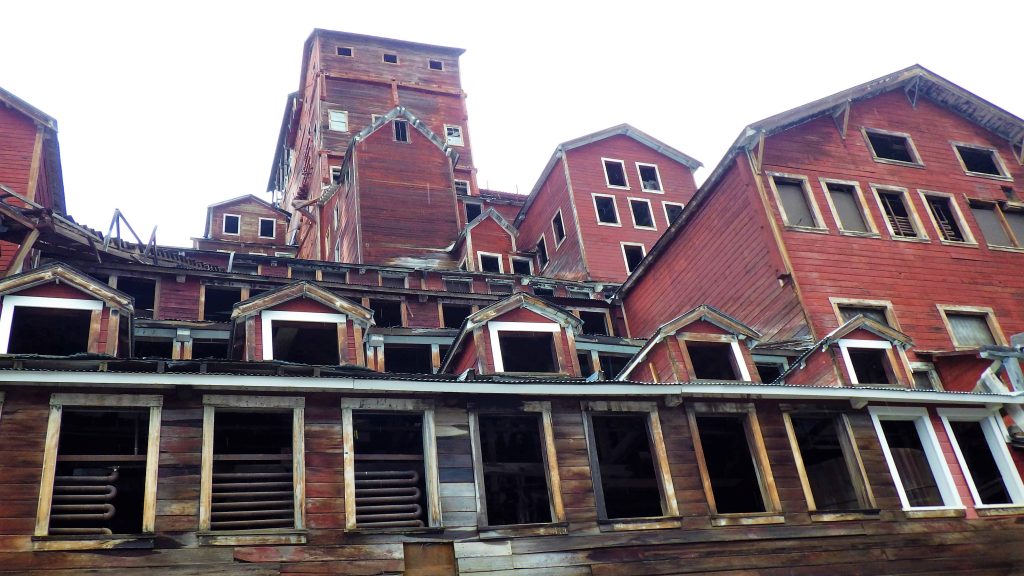
McCarthy
Be sure to explore the small village of McCarthy, which was voted Outside Magazine’s #2 Favorite Kickback Town in America. You’ll find three or four restaurants, and lest you think you’re way off the beaten path here: you can get your morning coffee (French press, if you prefer) at the Slow Down McCarthy Café—a log cabin and yurt combination that offers breakfast and lunch. Check out the art gallery, and by all means, saddle on up to the bar at The Golden Saloon.
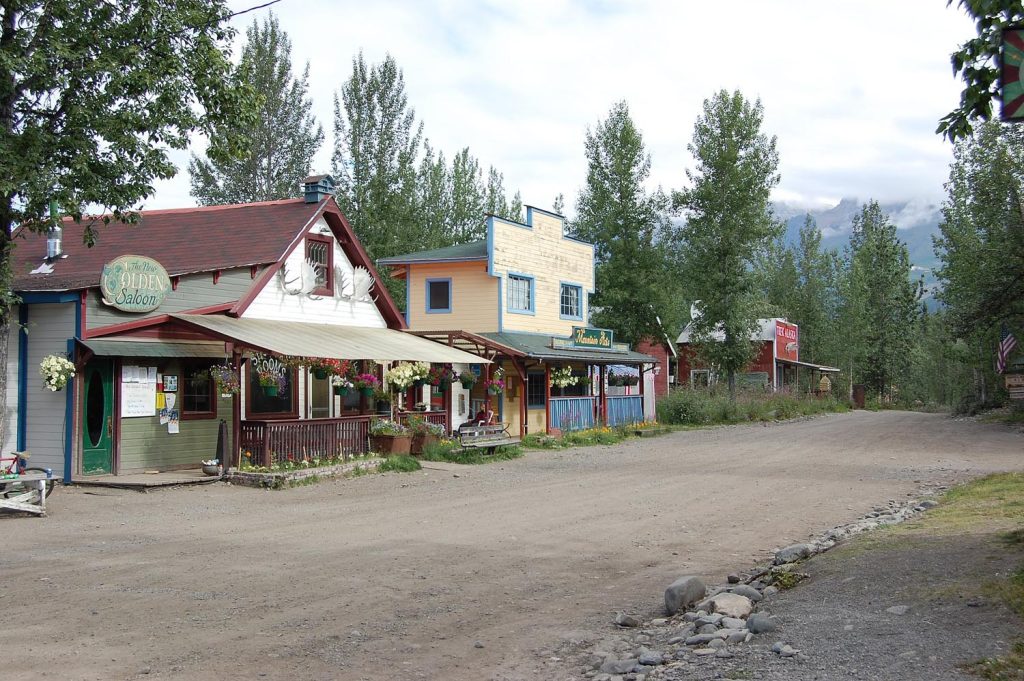
There are opportunities for mountain biking, hiking, glacier hiking, and fishing in the area. Raft trips, flightseeing, and mountaineering expeditions can keep you busy for days in this remote location. You might as well take advantage, after all, you worked hard to get here. There’s no reason to run back to civilization so soon.
So grab a room at the Kennicott Glacier Lodge, McCarthy Lodge, or Ma Johnson’s Hotel. Then enjoy live music or “Tall Tales” at the saloon, and plan the next day’s adventure in the wildest of Alaska’s backcountry.

More Alaska, Please!
If you enjoyed this visit to Wrangell-St. Elias, be sure to join us for more adventures across The Last Frontier in coming weeks!
Author’s Note: If you will be driving through Alaska and/or Canada please consider purchasing a current copy of “The Milepost.” It is a travel guide that will list necessities (like gas stations) and amenities (like lodging) throughout Alaska and the western Canadian provinces by milepost marker. This is a prerequisite for traveling in the area, as distances between service stations and grocery stores can be hundreds of miles in many cases. Another piece of knowledge gleaned from “The Milepost” are the hours (and seasons) of operation of businesses along the route, as many close down during fall and winter.
Do you have any questions about Wrangell–St. Elias? Leave a comment below.

